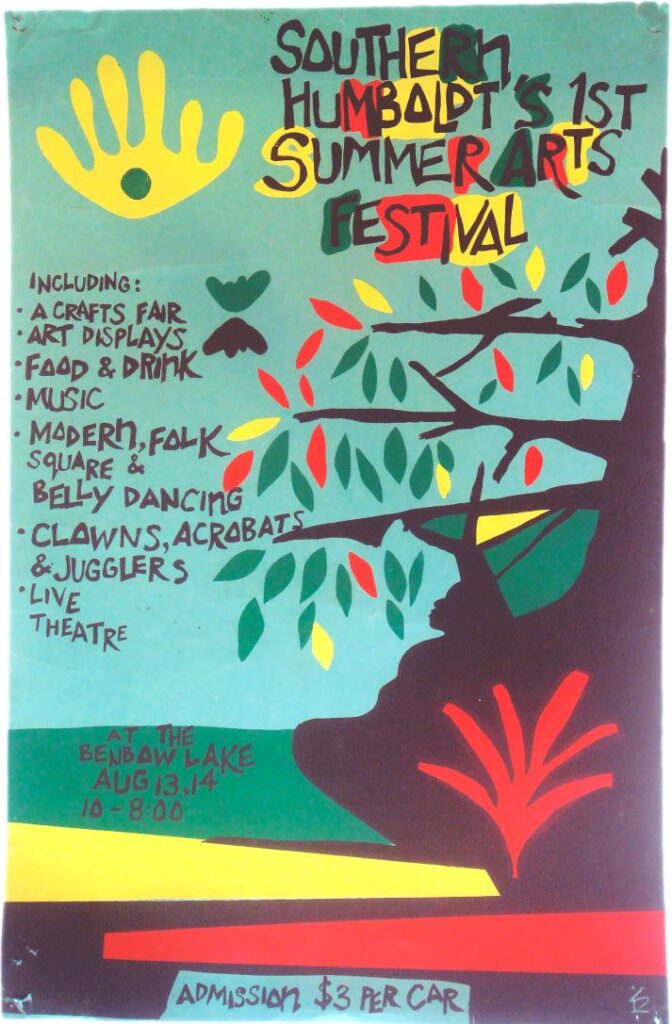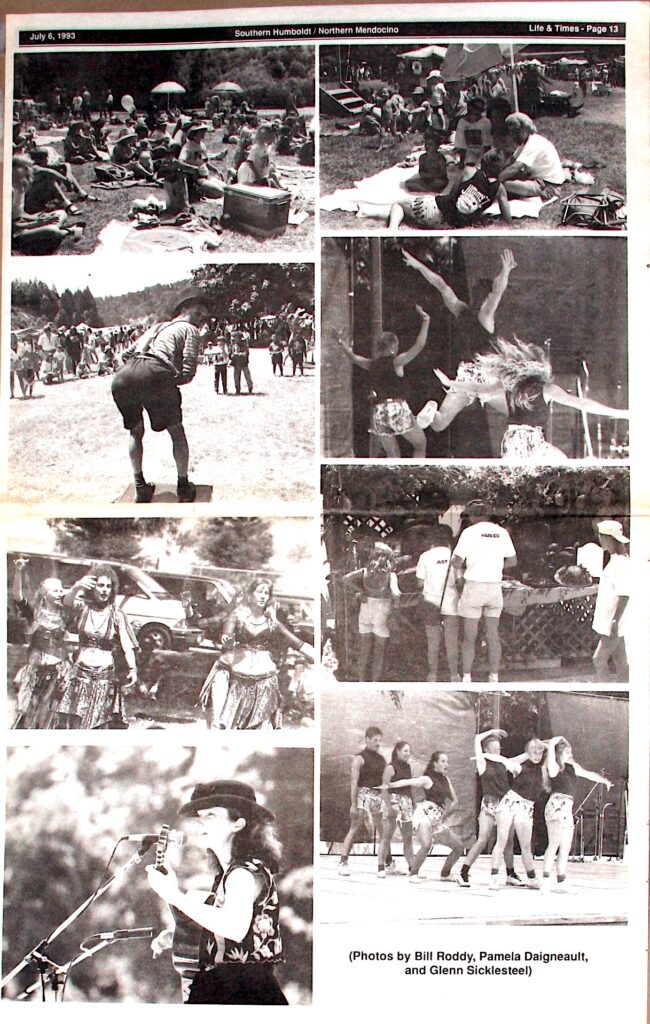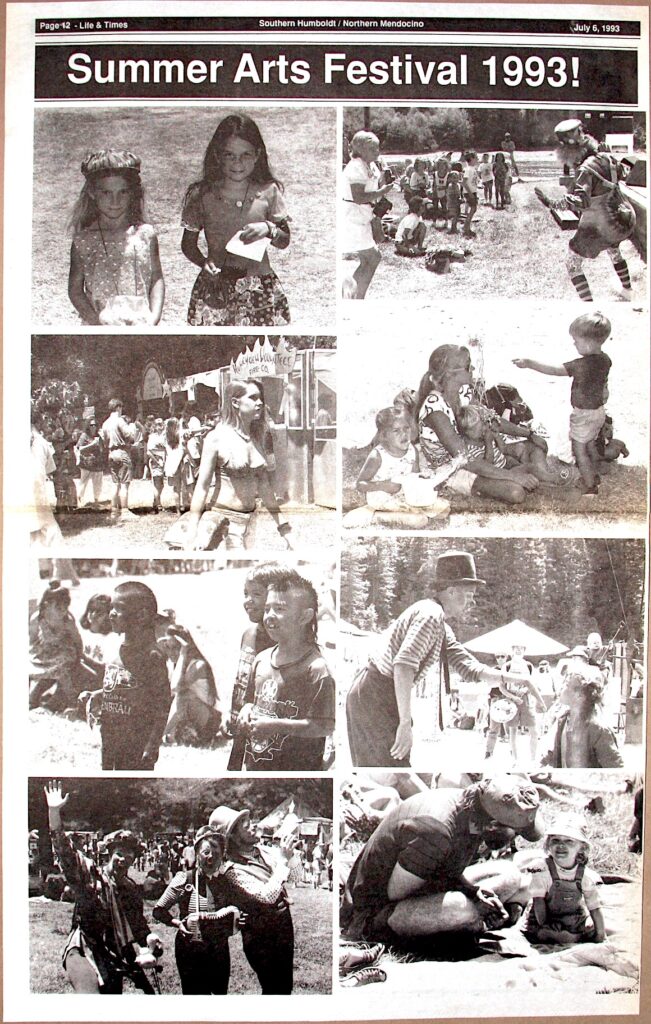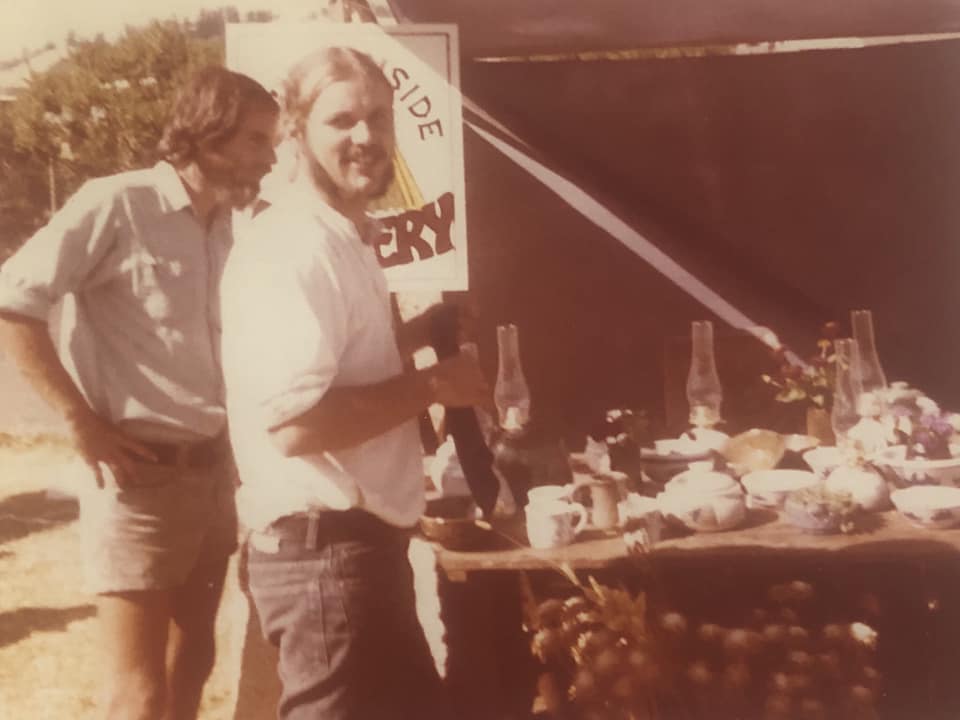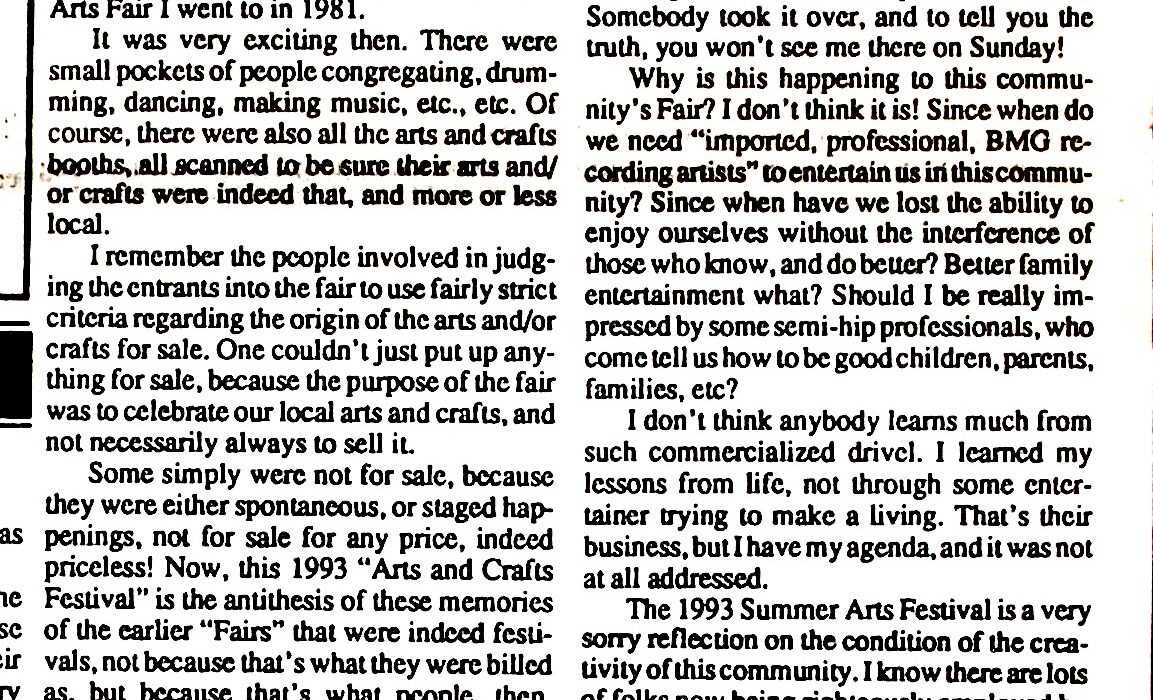In early winter 1977, Jude Sharp, one of the very few black women in the hills, and a member of the dance group Feet First, approached Allan Katz in his role as Southern Humboldt Working Together (SHWT) coordinator, to organize an event of performances that would also present local crafts. The idea would inaugurate the first annual gathering of hippie settlers from across the southern Humboldt hills in a time when many had neither telephones nor vehicles, let alone e-mail and Facebook.
Within only months, Sharp’s idea would receive community support, park authorization and California Arts Council funding. Behind the scenes, Allan Katz made it happen. As he put it in a 2016 interview, “I was the guy with a yellow legal pad on a clipboard, and a worried look, that would be walking around trying to make sure everything was okay. That was my job.”
Allan Katz was among the more active activist homesteaders who settled in southern Humboldt County in the 1970s. He co-founded the Salmon Creek Community School, near where he lived with his family, served on the Southern Humboldt Unified School District board, and in the 1980s ran and was narrowly defeated for County Supervisor. After a stint as executive director of Redwoods Rural Health Center, from 1985 to 1991, Allan left the Humboldt with his late wife, another local activist, Marylee Bytheriver. In 2003, they returned to Eureka where Katz worked as executive director of the Community Health Alliance of Humboldt-Del Norte until his retirement in 2010.
The idea for the festival was, Katz said, “There’d be arts and crafts and food and performances and several stages.” It was his job to find a location. Eventually, they settled on the park at Benbow Lake. Katz remembers the park’s authorities were interested but, “The administrator there was really nervous that it would turn into a disaster. My job was to get a positive decision out of him, which I did, but it took a while.”
Katz organized the event under the auspices of SHWT, working out of a corner in the textbook depository of the Humboldt Unified District building on Sprowel Creek Road. SHWT itself was formed out the Community Congresses, first held in southern Humboldt in 1975. These were not, as their name may suggest, a communist effort, but a program initiated by PGE to foster rural economic development. That is, hooking up more households to the grid.
The festival project was presented at the March 1977 Community Congress, and adopted and approved by the SHWT board. Next, Katz applied for a $700 California Arts Council grant, the first he’d written. Jerry Brown was governor and Katz remembers, “Two Arts Council members came to investigate. They were great young artists working for the state commission. They thought we were great. We got the $700.”

